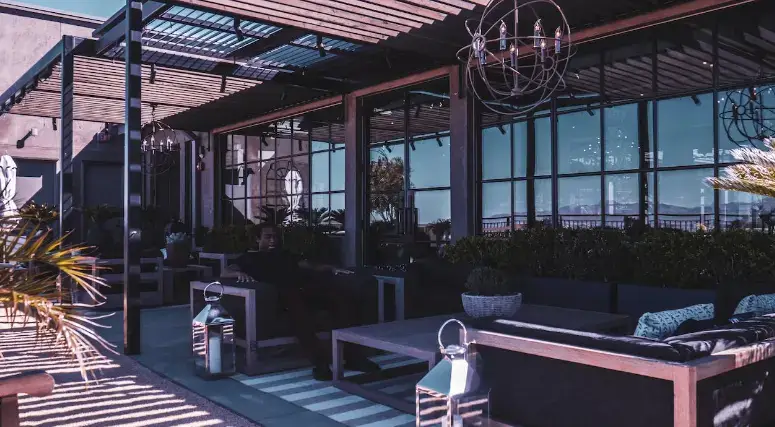Pros & Cons Of Patio Screen Enclosures

Patio screen enclosures, also known as screen porches or screened-in patios, offer an appealing middle ground between an open patio and a fully enclosed indoor space. They combine the enjoyment of outdoor living with protection from insects, weather, and the elements by using mesh or screen walls and roofs for containment while still keeping the space open and airy.
For many homeowners, a screened-in patio creates an ideal extension of livable space that can be used frequently for relaxing, entertaining, dining, and activities. However, while patio screen enclosures expand functional outdoor areas, they also introduce some additional costs, maintenance needs, and limitations compared to a standard open patio. In this article, let’s explore the pros and cons of having screen enclosures.
Pros
- Creates Useful Outdoor Space
A screen porch extends the functional space of a patio by shielding it from intense sun, wind, rain, dust, and insects while still allowing plenty of visibility, airflow, and an open feel.
- Expands Livable Area
Convert an ordinary patio into an extra room for relaxing, dining, entertaining or other activities. Use seasonally or year-round depending on climate.
- Prevents Annoyance From Insects
Keep away nuisance insects like mosquitoes, gnats, flies, and ticks without the need for pesticides, fans, or after-bite treatments.
- Blocks Weather Extremes
Find reprieve from extreme heat or cold and still enjoy outdoor surroundings. Stay comfortable even on very hot or mild days.
- Easy To Construct
Screen porches are often easier and more affordable to build compared to indoor rooms with solid walls. The screening provides structural support while still allowing visibility.
- Maintains Views
Screened walls and roofs make an enclosure feel more open since you can still see through the mesh screening material. Panoramic views remain largely unobstructed.
Cons
- Prone To Damage
Screens can rip, tear or develop holes more easily than solid walls, reducing effectiveness against insects or weather over time. Repairs may be needed frequently.
- Limited Year-Round Use
While more versatile than an open patio, screen enclosures still may be too hot or cold for extended use year-round in some climates. Seasonal adaptability depends on the weather.
- Lack Of Insulation
Screening provides minimal insulation, so screen porches can be less efficient in heating/cooling compared to indoor spaces with solid walls. Utility costs may be higher than expected.
- Let In More Dust And Debris
While screens can obstruct insects and bad weather, they still allow more dust, leaves, and other small debris to enter compared to solid walls. Extra cleaning may be required.
- Less Privacy
The mesh screening material does not fully block visibility, so a screen porch may feel less private than a fully enclosed space. Views in and out are mostly unobstructed.
- Moisture Can Get Through
While screens inhibit heavy rain and wind, humidity, and moisture still seep through the mesh to some degree, especially if insulation is lacking. The space may feel damp at times.
- Lifespan May Be Limited
Screening material and frames can start to deteriorate over many years of exposure outdoors, reducing the effectiveness and usefulness of the space. Frequent replacement of parts may eventually make the structure unsound.
To Wrap Up
Overall, patio screen enclosures provide an opportunity to expand and extend patio living space through protective screening. By balancing visibility and containment, they create useful but breathable outdoor areas to enjoy. However, the screening itself and lack of insulation can lead to additional costs, damage, reduced effectiveness, and shorter lifespan. With consideration of climate, weather, insects, usage frequency, and lifespan needs, patio screen enclosures can make an ideal outdoor space.
